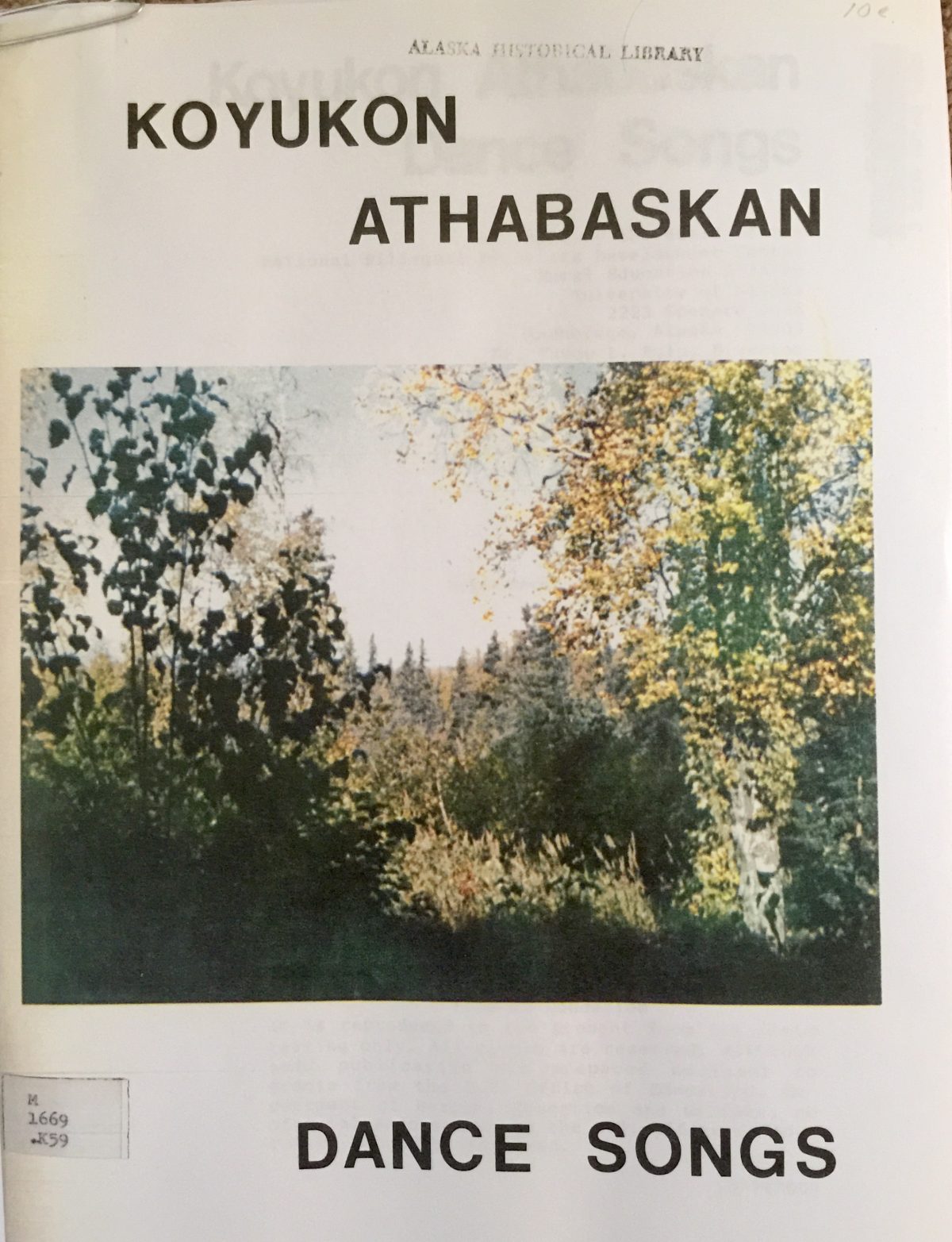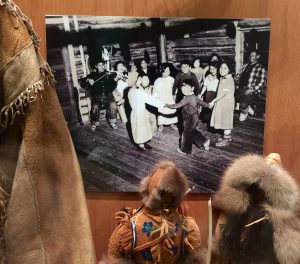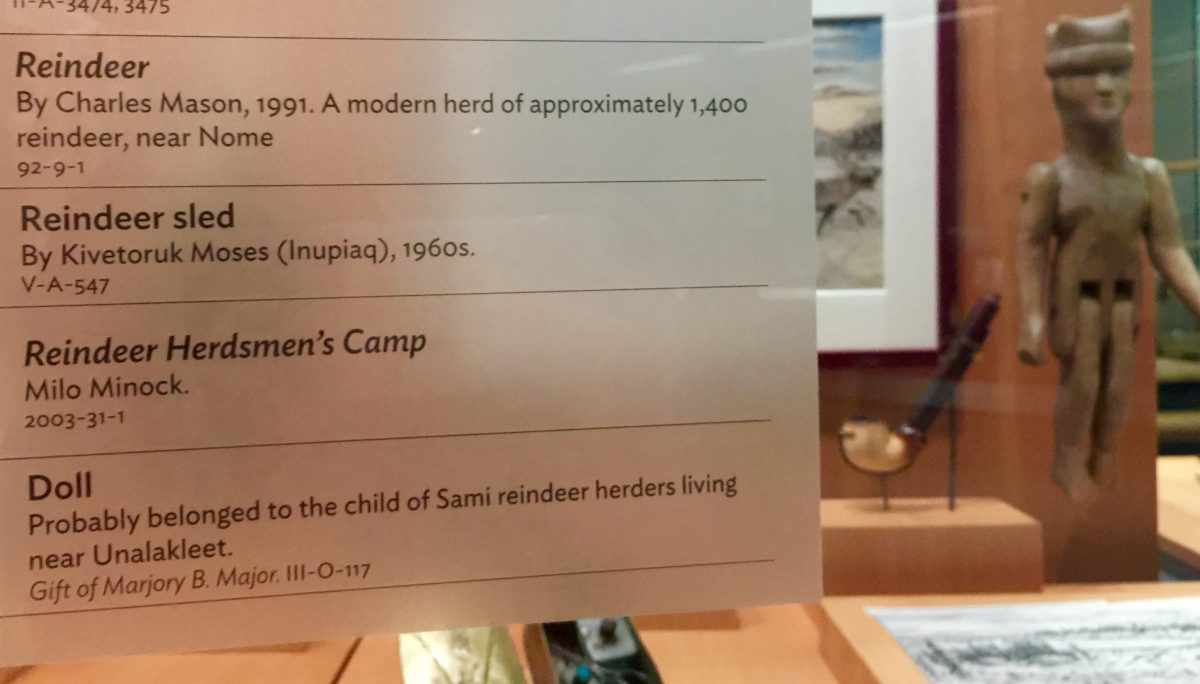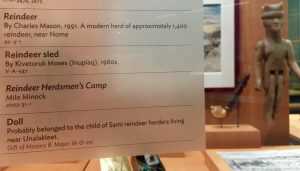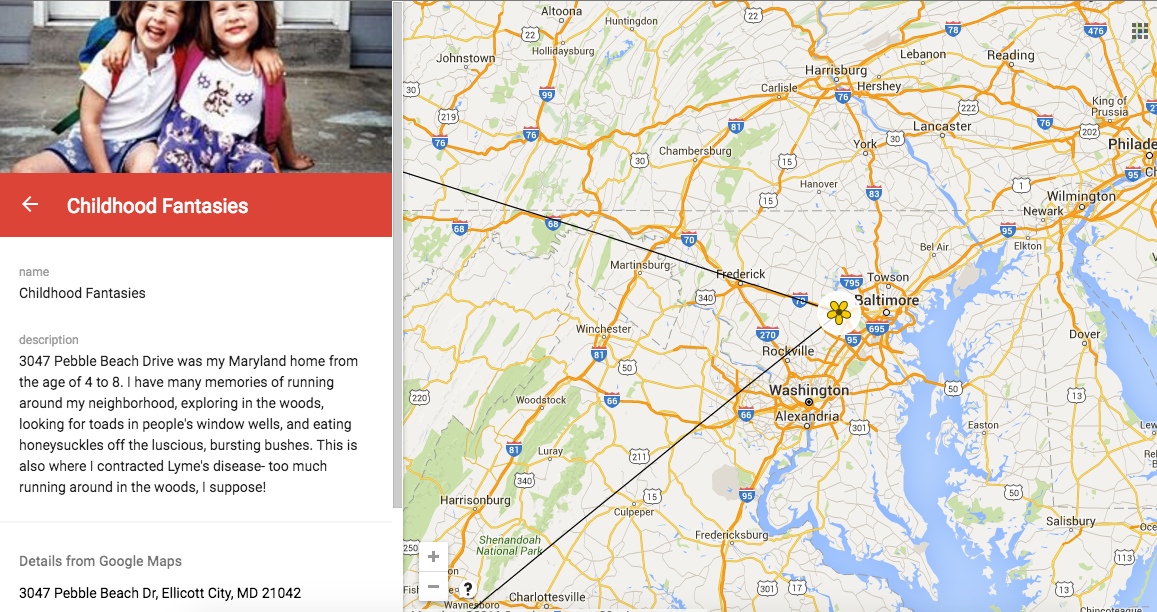I will be creating a lesson plan on Athabaskan fiddling for sixth grade music students (specifically, string players). This lesson will be 45 minutes long. This lesson will be paired with Meghan Johnson’s lesson plan about modern Athabaskan fiddling and the group that has developed to provide quality fiddle music education to students in Fairbanks.
The essential question will be, “How do other cultures influence the music we make?”, as we look at how the music of the trappers and settlers of Fort Yukon in the 1840’s influenced Athabaskan music, which led to fiddle music becoming a significant part of Athabaskan culture.
Students will be working with several different artifacts documenting the development of fiddle music in Athabaskan culture, including photographs from the Alaska State Museum Archive (like the one above), texts that give an overview of the history, and actual Athabaskan fiddle songs that have been passed down and continue to be played in the Interior (a page of one is shown below). There are also many YouTube videos Meghan and I will be working with, documenting the more current history of the fiddle music.
This is where I am a little stuck. I am trying to reconcile the idea that this is not a complete, laid-out lesson plan with activities, and yet I still need to have something for students to “do”. I want students to take a look at the evidence and come up with their own thoughts about how these different people groups affected the development of fiddle music in Athabaskan culture. Beyond that, I would love to have a discussion where they think about their own cultures and musicianship, making the connection that the music they play in orchestra was also created from many different influences. I would leave them to reflect on the question, “How does your cultural identity influence the music you make?”.
